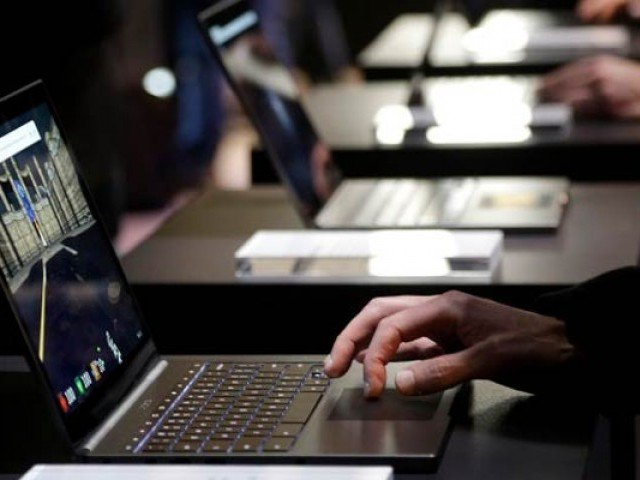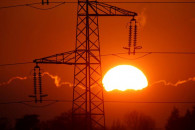Bridging digital divide in Pakistan
Pakistan must ensure easier access to technology across different population segments

One of the biggest challenges in Pakistan is to bridge the widening digital divide. The digital divide across popula- tion segments occurs due to inequality in access to digital technologies.
It not only results in un- equal access to information but can also exclude those segments of population from greater prospects of economic growth.
Digital technologies can be adopted across different eco- nomic sectors. Small busi- nesses benefit from digital technologies by expanding their customer base and farmers can benefit from in- formation about crop prices for maximising their profits.
The importance of easier access to digital technologies has increased multiple times during the Covid-19 pan- demic as work environment has changed from physi- cal presence to online. However, the digital divide becomes more apparent due to inequality in the adop- tion of digital technologies across different population segments.
According to the World Development Indicators, Pakistan had 73 mobile cel- lular subscribers per 100 people in 2018, increasing from 63 in 2015. There was a significant drop in 2015 as a result of the SIM registra- tion process. The average for South Asia is 87.
Pakistan has 15% of its pop- ulation connected to the in- ternet. The average for South Asia is 30%. Furthermore, 0.85 people out of every 100 have fixed broadband con- nections compared to 1.8 in South Asia.
Interestingly, the sub-Sa- haran African region is bet- ter connected with 25% of the population having internet access and 82 people out of every 100 having mobile cel- lular subscription.
The Global Connectivity Index of Huawei, developed to analyse performance of the information and com- munication technology (ICT) sector in a country, its digital competitiveness and poten- tial for future growth, ranks Pakistan among the bottom five out of 79 countries. This clearly indicates the chal- lenges faced by Pakistan as it pushes for a greater role of digital technologies.
Mobile ecosystem
The recently published report of GSMA titled “Pakistan: Progressing Towards a Fully Fledged Digital Economy”, put total economic contribu- tion by the mobile ecosystem in Pakistan at 5.4% of gross domestic product (GDP) or $16.7 billion in 2018.
A major proportion is con- tributed by productivity improvements through the use of digital technologies across different sectors. It is expected that its contribu- tion to GDP will increase to $24 billion in 2023.
The mobile ecosystem em- ployed a total, both directly and indirectly, of 450,000 workers and contributed $2.2 billion to public sec- tor revenue. A comparison across South Asia shows that Pakistan has one of the lowest mobile internet penetrations.
Pakistan has the largest percentage of population out of mobile broadband cover- age across some of the larger economies in Asia. A signif- icant percentage of popula- tion does not subscribe to mobile internet services.
Although the number of smartphone users rapidly in- creased to 81 million in 2019, there was still a significant potential for increasing the smartphone adoption rate by providing cheaper handsets. The handsets in Pakistan are relatively expensive com- pared to regional countries.
Pakistan reports lower level of capital-intensity ratio compared to other large economies in the region. Even though $5.3 billion was invested in infrastruc- ture between 2010 and 2018 by telecom operators, the an- nual capex-revenue ratio, at 23%, was one of the lowest in the region.
It is important to note that $67 billion is expected to be invested in mobile networks between 2019 and 2025 in South Asia, primarily fo- cusing on the 5G network. Unfortunately, only 10% of the capex in Pakistan is ex- pected to be invested in 5G given the 3G/4G lifecycle.
The report emphasises the importance of building the digital momentum and not lagging behind regional counterparts in terms of technological advancement.
Phone imports
According to the International Trade Centre’s Trademap.org, Pakistan imported $1.4 billion worth of telephone sets, apparatus for communication in wired or wireless network and their parts and accessories.
The highest surge was reported in 2008, when Pakistan imported $1.5 bil- lion worth of aforemen- tioned products compared to only $63 million in 2007.
Although imports of mo- bile phones dominated the import basket of telecom- munication equipment, there was initial surge in imports of apparatus for the reception and transmission of voice as well as parts and accessories, which became subdued in 2015.
Since 2015, imports of tele- communication equipment have been mostly limited to mobile phones.
According to data pro- vided by the Board of Investment, there was a surge in foreign investment in the IT and telecom sector in FY14 and FY16.
Interestingly, the highest inflow into this sector in the past 10 years has been reported in the current fiscal year – FY20. This may indicate a potential improve- ment in the prevalence of digital technologies.
The United Nations Conference on Trade and Development (Unctad), in its Digital Economy Report 2019, outlines enormous potential gains in terms of wealth creation as countries connect online.
Investment in digital data and platforms is likely to drive value creation in the digital economy. However, it also points to the limited capacity to not only cre- ate but capture value from digital technologies due to inequalities between coun- tries but also across different population segments within countries.
Every country requires a different policy mix that promotes fair distribution of potential gains. Strategies have to be adopted to not only upgrade digital tech- nologies but also to enhance domestic capabilities to take advantage of the increase in the flow of information.
As the world becomes more digitalised, investment and trade are likely to be driven by the ability of countries to better integrate their digital systems.
The Escap Digital and Sustainable Regional Integration Index and Indicator Framework, pub- lished in 2019, compares the performance of countries in terms of their ability to do so. It ranked Pakistan at the bottom in terms of digital economy integration in 2017.
According to the report, Pakistan imposes a relatively higher level of tariffs on ICT products, while the rate of access to household internet is comparative to the coun- tries ranked in the bottom quartile.
In essence, it is essen- tial that Pakistan joins the bandwagon of digitalisation and ensures easier access to technology by bridging the digital divide across different segments of the population. This is definitely the need of the hour.
THE WRITER IS THE ASSISTANT PROFESSOR OF ECONOMICS AND RESEARCH FELLOW AT CBER, IBA



















COMMENTS
Comments are moderated and generally will be posted if they are on-topic and not abusive.
For more information, please see our Comments FAQ